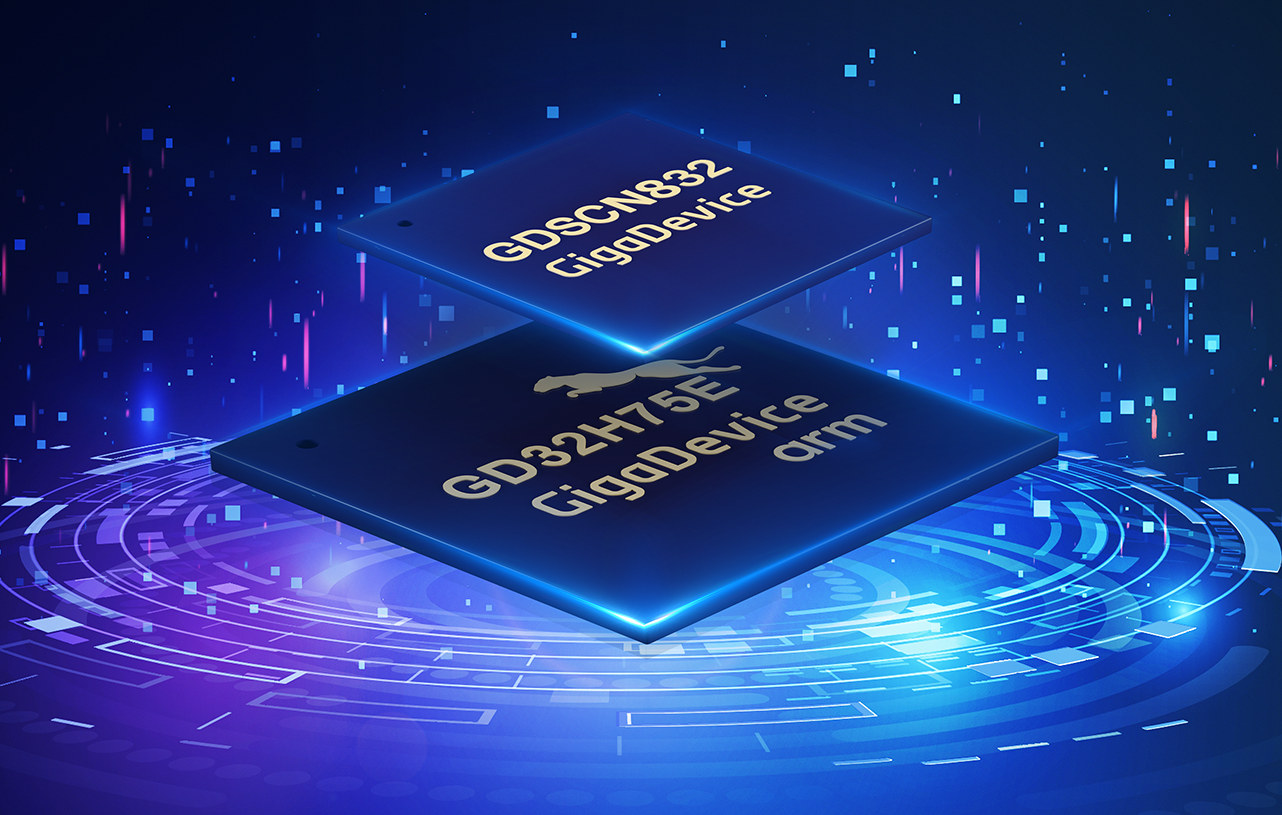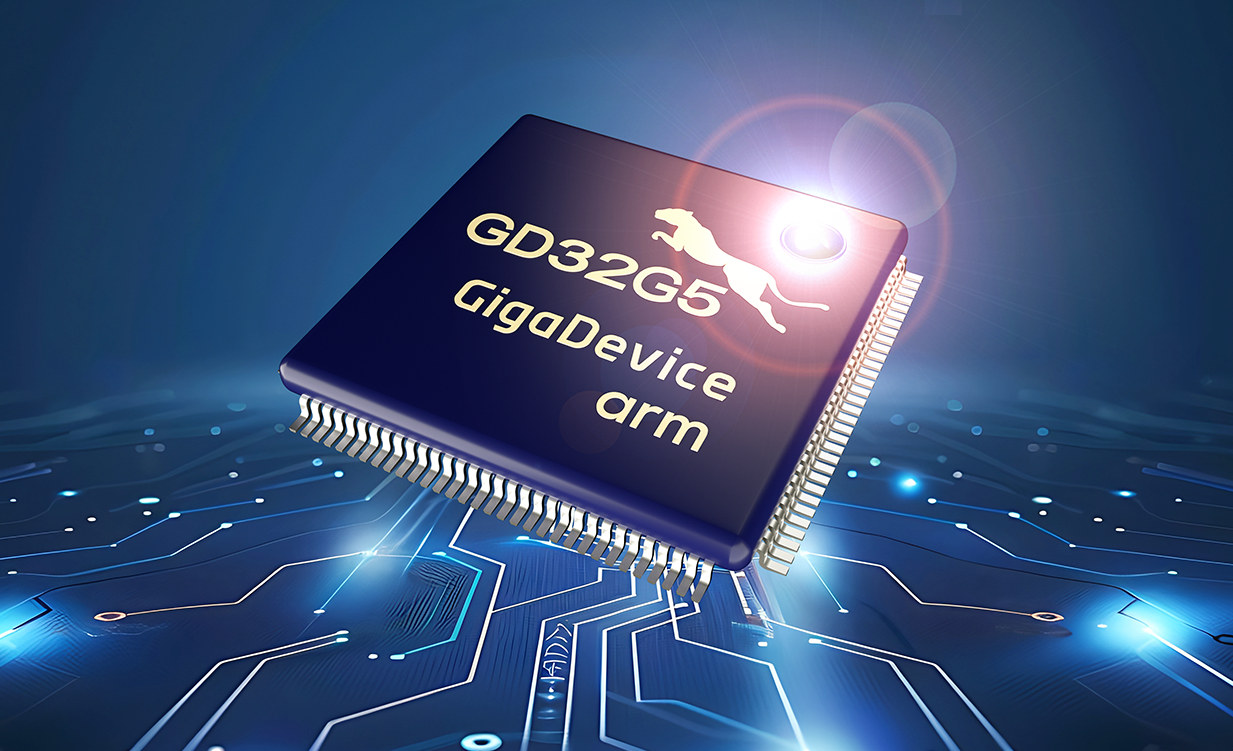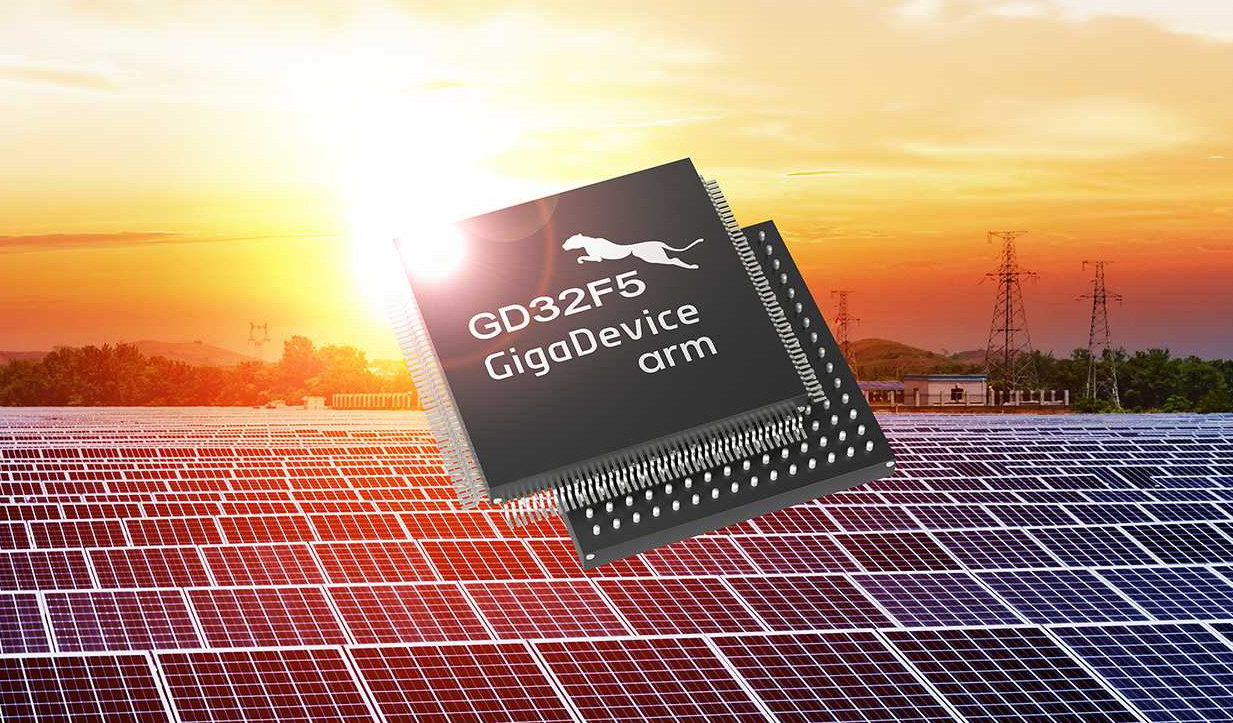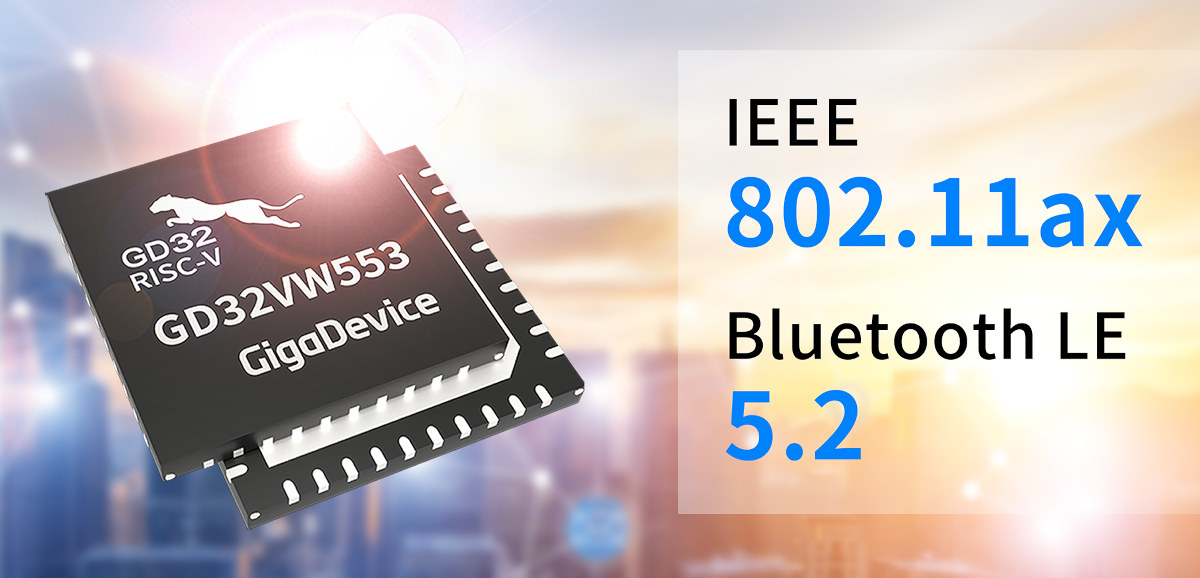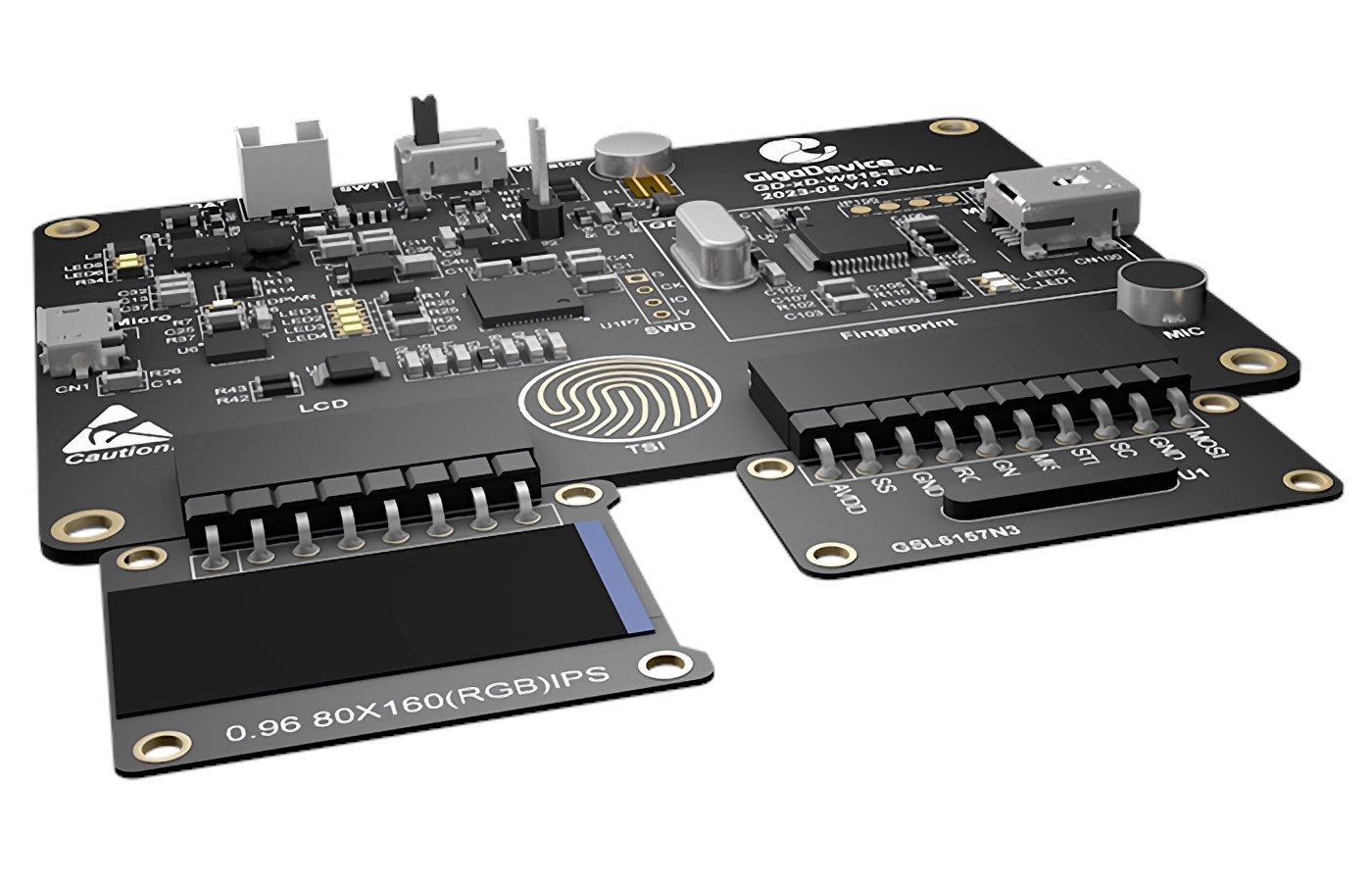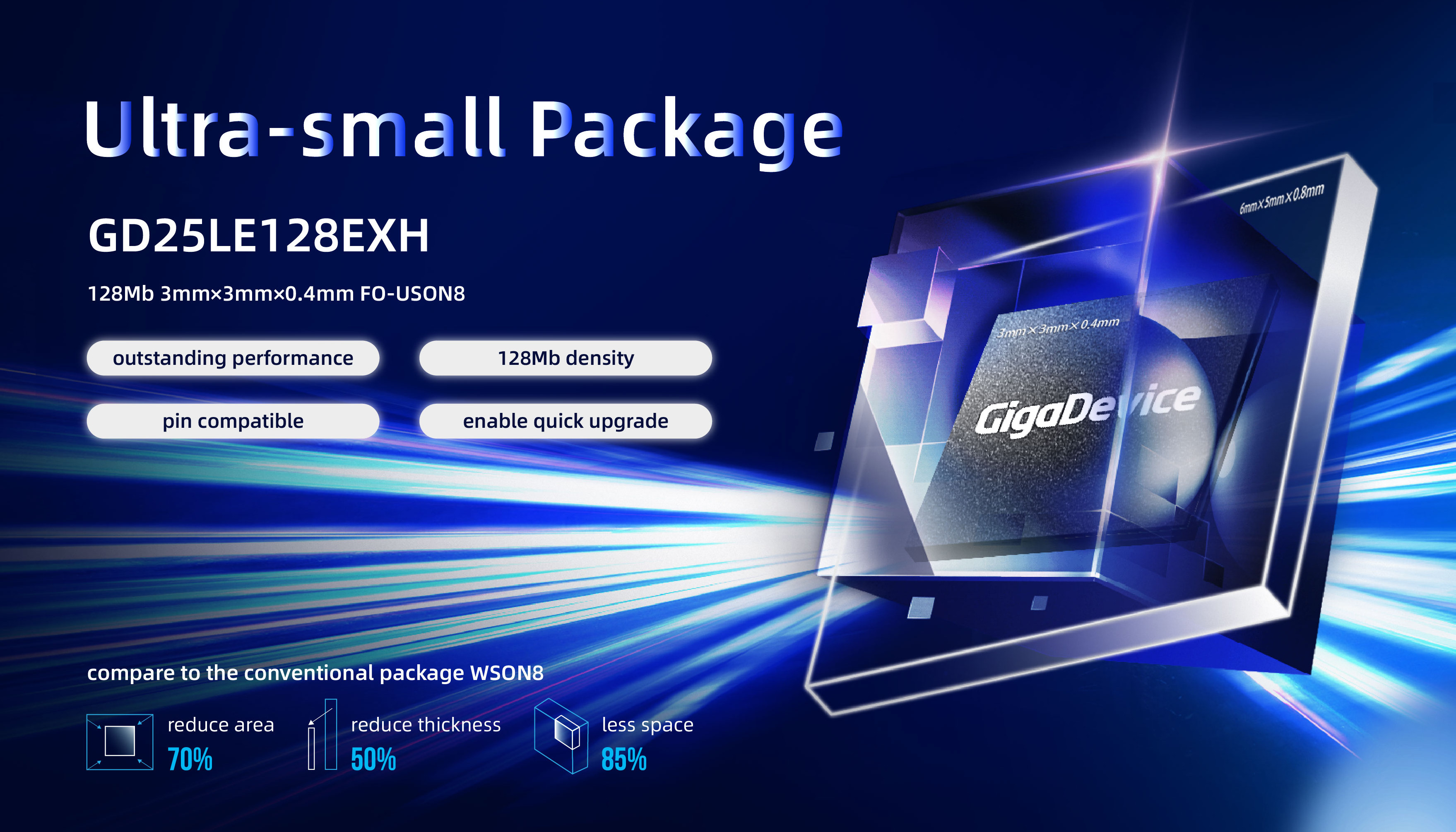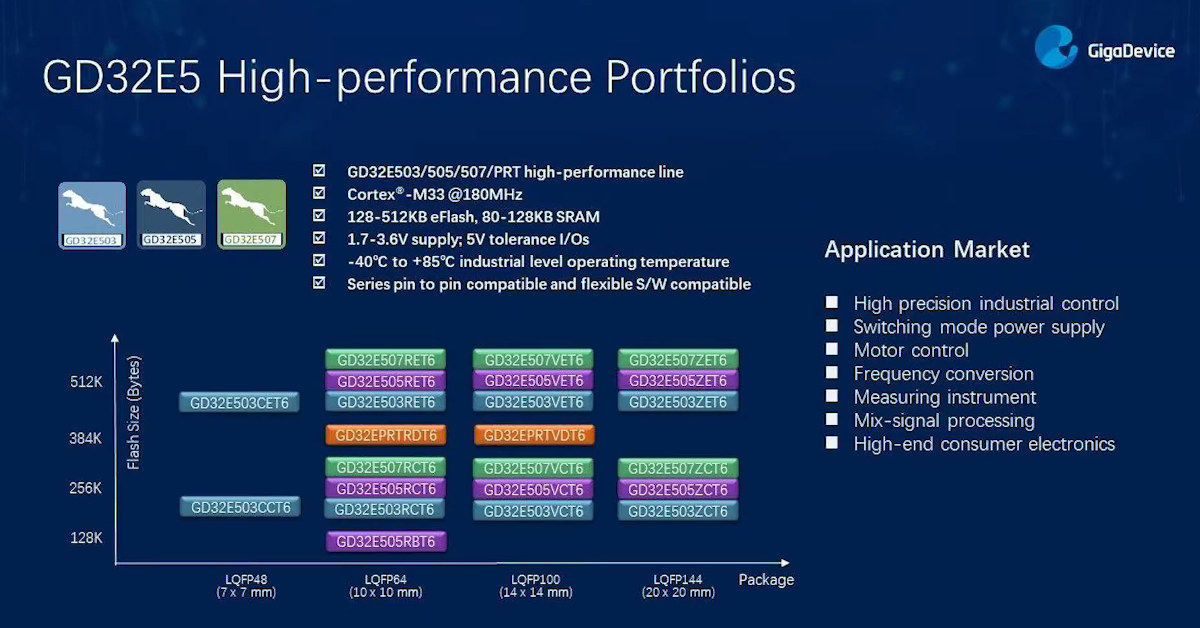GigaDevice has launched its first EtherCAT SubDevice Controller with the GDSCN832 along with the 600 MHz GD32H75E Arm Cortex-M7 microcontroller series which incorporates the EtherCAT SubDevice Controller. The GH32G57E microcontroller also comes with 1024KB SRAM, 3840 KB flash with protection, up to two Ethernet PHY, USB Full Speed and High-Speed interfaces, and a range of peripherals and timers. Both products are made for the industrial automation market and are suitable for servo control, variable frequency drives, industrial PLCs, and communication modules. Gigadevice GD32H75E specifications: CPU – Arm Cortex-M7 32-bit processor core operating at 600 MHz frequency Memory and Storage 512KB AXI SRAM 512KB RAM shared (ITCM/DTCM/AXI) memory 3840 KB on-chip Flash memory with security protection to prevent illegal code/data access External memory controller (EXMC) for SRAM, PSRAM, ROM, and NOR Flash Accelerator – Filter arithmetic accelerator (FAC) and Trigonometric Math Unit (TMU) Industrial communication 2x Ethernet PHYs (YMJ6 parts only) […]
216MHz GigaDevice GD32G5 Cortex-M33 MCU features analog interfaces and accelerators for industrial applications
Starting with the GD32G553 SKUs, the 216 MHz GigaDevice GD32G5 high-performance Arm Cortex-M33 microcontroller family features 256KB to 512KB of embedded Flash with dual-bank Flash support, 128KB of SRAM, and a range of hardware accelerators including a DSP, single-precision FPU, a trigonometric function accelerator (TMU), and other hardware acceleration units, filter algorithms (FAC) and Fast Fourier Transform (FFT). Designed for industrial applications, the GD32G5 microcontrollers also offer a wide range of digital and analog interfaces and enhanced security capabilities suitable for digital power systems, charging stations, energy storage inverters, frequency converters, servo motors, and optical communication. GigaDevice GD32G5 specifications: MCU Core – Arm Cortex-M33 Armv8-M core clocked at up to 216MHz with DSP instruction set and single-precision FPU; up to 316 DMIPS, CoreMark score: 694. Memory/Storage 128KB SRAM (80KB SRAM0 + 16KB SRAM1 + 32KB TCMSRAM) 256KB to 512KB on-chip flash, QSPI interface for external storage External memory controller (EXMC) […]
GigaDevice announces GD32F5 Cortex-M33 microcontroller targeted at high-performance applications
GigaDevice has officially launched the GD32F5 microcontroller series based on the Arm Cortex-M33 core. The Arm Cortex-M33 core has a maximum operating frequency of 200MHz and a working performance of up to 3.31 CoreMark/MHz. It also comes with a digital signal processing extension and a single-precision floating-point unit to reduce the load on the core. The GD32F5 microcontrollers are designed for high-performance applications and come equipped with up to 7.5MB on-chip flash, 1MB static RAM (SRAM), and diverse connectivity peripherals. The on-chip flash includes a zero-wait execution area (code flash) to improve code processing efficiency and real-time performance, and sizable data flash space for storing backups and parameters. The products support seamless OTA updates with a maximum of 2MB for Read-While-Write (RWW) operations. According to GigaDevice, the GD32F5 series is expected to find applications in “energy and power management, photovoltaic energy storage, industrial automation, programmable logic controllers (PLC), network communication […]
Gigadevice GD32VW553 RISC-V microcontroller supports WiFi 6 and Bluetooth 5.2 LE
Gigadevice GD32VW553 is a new 160MHz RISC-V microcontroller for IoT applications with support for WiFi 6 (802.11ax) and Bluetooth 5.2 Low Energy (LE) and available in QFN32 and QFN40 packages with up to 28 GPIOs. As an IoT chip, the chip supports various power modes and target wake time (TWT) for low power consumption, as well as WiFi features such as WPA3 and WiFi direct, while the radio can handle Bluetooth 5.2 LE bit rates of up to 2 Mbps and support the Long Range mode. Gigadevice GD32VW553 specifications: MCU core – 32-bit Nuclei N307 RISC-V core @ up to 160 MHz with RV32I / M / A / F / D / C / P / B instruction extensions Memory – 320KB SRAM Storage – 2048KB or 4096KB flash Wireless WiFI 6 802.11b/g/n/ax HT20 up to 114.7Mbps 802.11e QoS Enhancement (WMM). 802.11i (WPA, WPA2, WPA3). Open, shared key, and […]
GigaDevice GD-xD-W515-EVAL board features GD32W515 Cortex-M33 MCU, a fingerprint scanner, and an LCD module
GigaDevice GD-xD-W515-EVAL is a new “all-in-one” Cortex-M33 evaluation kit comprised of a GD32W515 mainboard, a fingerprint board, and an LCD board powered by either a battery or the Mini-USB interface of the GD-Link programmer. The devkit is mainly used to evaluate various chips from the company, namely the 180 MHz GD32W515PIQ6 Cortex-M33 microcontroller, the GD25Q128E SPI NOR flash, the GSL6157 capacitive fingerprint Sensor, the GD30BC2416 battery management IC, and the GD30LD1002 power management chip. GigaDevice GD-xD-W515-EVAL board specifications: MCU – Gigadevice GD32W515PIQ6 Core – Arm Cortex-M33 microcontroller clocked at up to 180 MHz with Arm TrustZone support Memory – 448KB SRAM Storage – 2048KB flash Wireless – 2.4 GHz WiFi 4 (802.11b/g/n), but somehow not used in the development board… I/Os – Up to 43x GPIOs, 3x USART, 2x I2C, 2x SPI, USB 2.0 FS, I2S, etc… Package – QFN56 Storage – 128Mbit SPI NOR Flash (GD25Q128E) Display – 0.96-inch […]
Gigadevice GD25LE128EXH is a tiny 3x3mm 128Mbit SPI NOR flash
GigaDevice Semiconductor has just launched the GD25LE128EXH 128Mbit SPI NOR Flash in a tiny ultra-compact 3x3x0.4mm FO-USON8 package designed for IoT, wearables, healthcare, and networking products. The GD25LE128EXH supports up to 133MHz frequency with four channels delivering up to 532Mbit/s data throughput. GigaDevice also highlights the low power consumption of just 6mA when reading, or a reduction of power consumption by 45% compared to previous devices. GD25LE128EXH specifications: Density – 128Mb I/O Bus – Single I/O, Dual I/O, Quad I/O, QPI Frequency – 133 MHz (x1 x2 x4) Features H/W RESET WP# Security Registers with OTP Locks Suspend Unique ID HOLD# Voltage – 1.65V~2.0V Package – FO-USON8 3x3mm Temperature Range – -40°C~85°C; -40°C~105°C, or -40°C~125°C The GD25LE128E SPI flash is also available in SOP8 208mil, USON8 4x4mm, WSON8 6x5mm, WSON8 8x6mm, and WLCSP (4-4 ball array) packages, which means the GD25LE128EXH’s FO-USON8 package reduces area by 70% and thickness by […]
GigaDevice GD32E5 Cortex-M33 microcontrollers target motor and industrial control
We first mentioned GigaDevice Semiconductor in 2015 for its STM32-compatible GD32 microcontroller, but last year, the company was brought back to our attention again with its GD32V RISC-V microcontroller with similar features as its GD32 Cortex-M3 model but equipped with a faster and more efficient RISC-V “Bumblebee” core. That does not mean the company has given up on Arm though, as GigaDevice recently announced GD32E5 Cortex-M33 high-performance microcontrollers, manufactured using TSMC’s Low Power 40nm process, and designed for embedded systems such as high-precision industrial controllers, motor control applications, digital power supplies, measuring instruments, mixed-signal processing applications, and industrial/consumer controllers. GD32E5 MCU key features & specifications: MCU Core – Arm Cortex-M33 Armv8-M core clocked at up to 180MHz with DSP instruction set and single-precision FPU. Memory – 80KB to 128KB SRAM Storage – 128KB to 512KB on-chip flash, QSPI interface for external storage Peripherals USB 2.0 OTG dual-function controller, including 480Mbps […]
GigaDevice Releases GD32V RISC-V MCU and Development Boards
A few years ago, we came across GigaDevice GD32 microcontroller compatible with STMicro STM32F103, but with a higher 108 MHz clock, and zero wait state internal flash. The MCU was also a drop-in replacement for the STMicro alternative since beside being software compatible, it was also pin-to-pin compatible. The company is now back with a new microcontroller, but it’s not Arm-based. Instead, GigaDevice GD32V is based on RISC-V open source architecture. GD32V General Purpose RISC-V MCU GigaDevice GD32V is a 32-bit RISC-V general-purpose MCU that targets industrial and consumer applications such as IoT, edge computing, artificial intelligence and “vertical industries”. The new GD32VF103 series RISC-V MCU family features 14 models with the following key specifications: Core – GD32VF103 32-bit rv32imac RISC-V “Bumblebee Core” @ 108 MHz Memory – 8KB to 32KB SRAM Storage – 16KB to 128KB flash Peripherals – USB OTG and CAN 2.0B I/O – 3.3V, 5V tolerant […]


